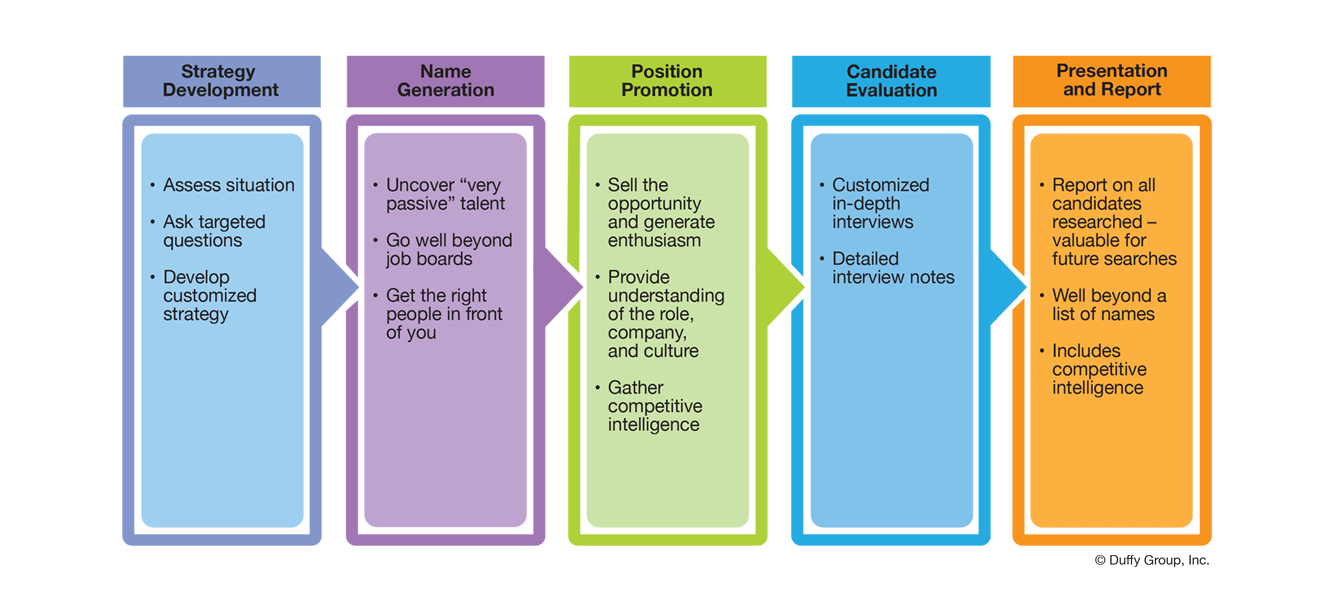Building a sourcing strategy — We start by learning everything about our clients’ businesses and the type of people they want to recruit.
For example, clients may need a product manager, but there may be 15 types of product managers, and we want to hit the bulls-eye right out of the gate. The client may — or may not — want us to target competitors, may be in a new industry and not know who the players are, or may not even know what they want in a new position. As part of the Recruitment Research process, our job is to roll up our sleeves and find out.
Name generation — Armed with information from our client briefing, we begin identifying candidates whose backgrounds, education and experiences dovetail with their needs. We use a variety of methods — from cold-calling and Internet tools to probing professional organizations, trade shows and chambers of commerce — to find people who are looking for new careers – and some who may not be looking at all.
This is where the detective work shines. Our practice leaders excel in being smart, diligent, efficient, respectful, adaptive and prepared.
Recruitment candidate vetting — List in hand, Duffy Group then contacts all viable candidates to pre-qualify them. Because getting people to return calls may be difficult, our outreach message is compelling with the sizzle around why they should consider the opportunity. For a candidate, that is hard to resist.
Once we have a candidate’s attention, we ask a series of “hurdle questions”: Are they interested in relocating to a particular area? Do they have the right educational or experience requirements? Would they be interested in the job our client is trying to fill? Salary and compensation expectations also are broached.
During this step, our recruiters are building internal talent pools from which clients can use for this hire and others to come.
As one Duffy Group client said, “The best can’t be hired, they must be courted.“
Highly qualified and fully screened candidates — Duffy Group may search as many as 100 candidates for one position, and through the vetting process present a short list of interested, qualified candidates. The deliverables include a comprehensive research report with market data, customized in-depth candidate profiles and resumes. The first candidates are typically seen in 10 to 15 business days.
Our clients own the candidate database that could be useful as their business changes and new employees are needed. We think of it as a talent database to carry them into the future.


